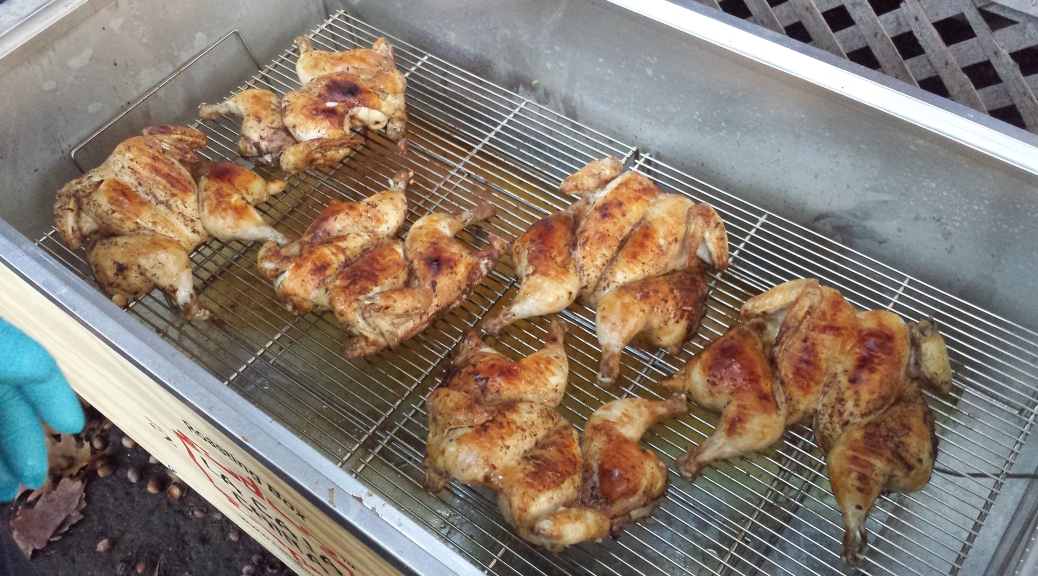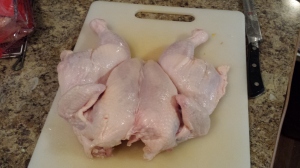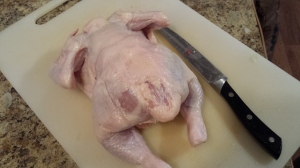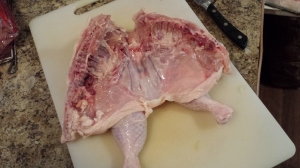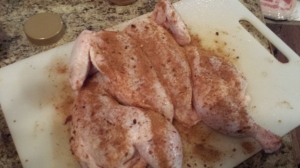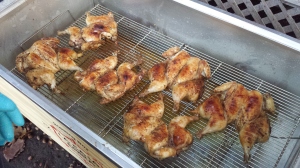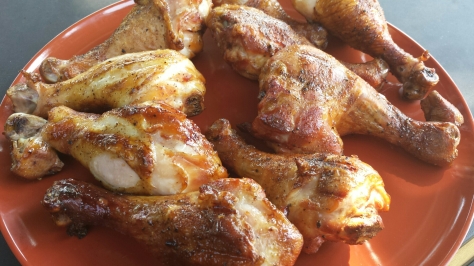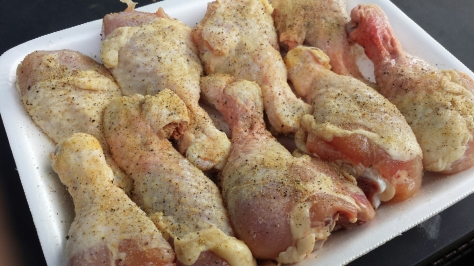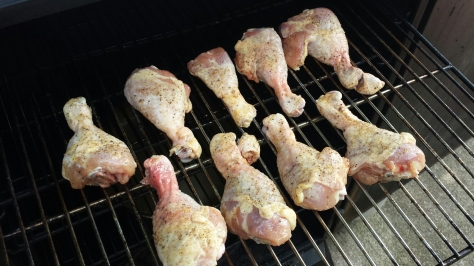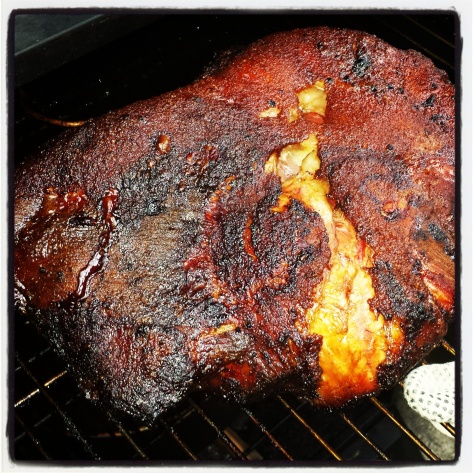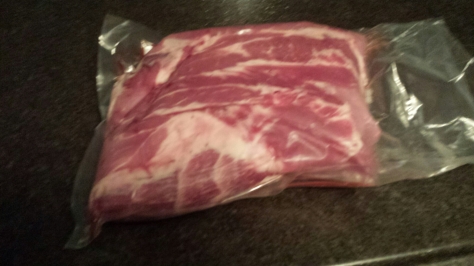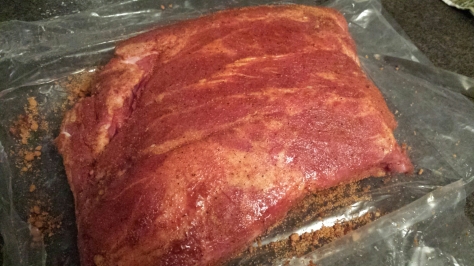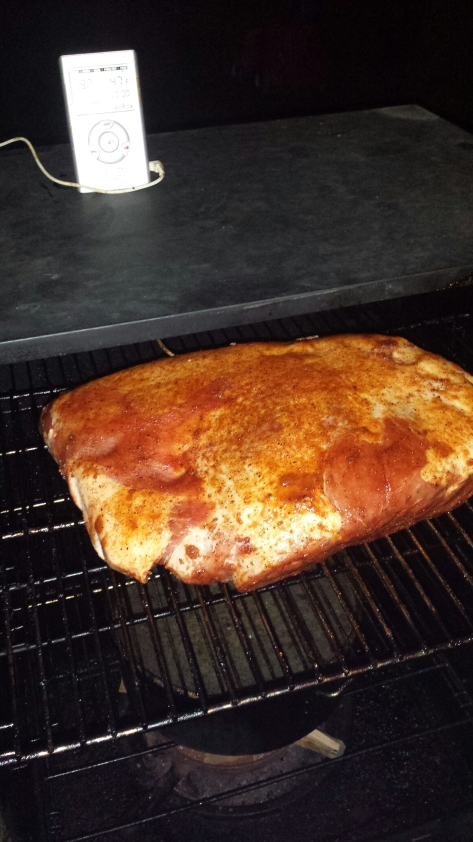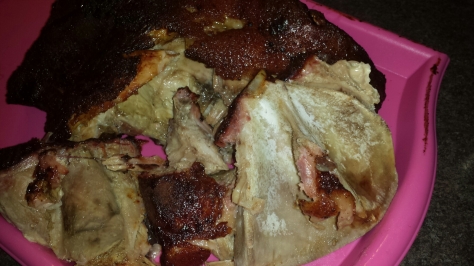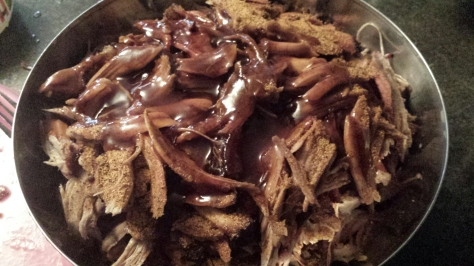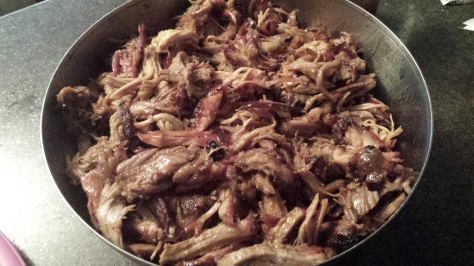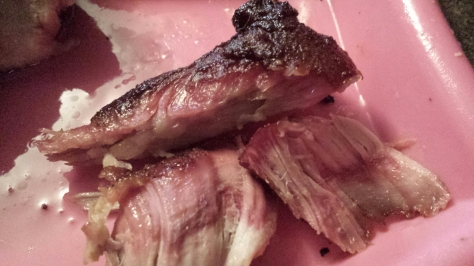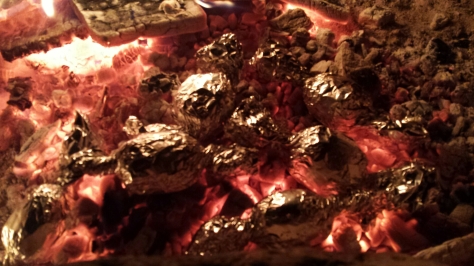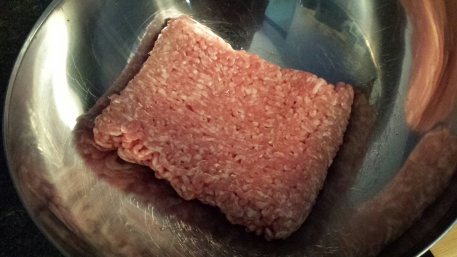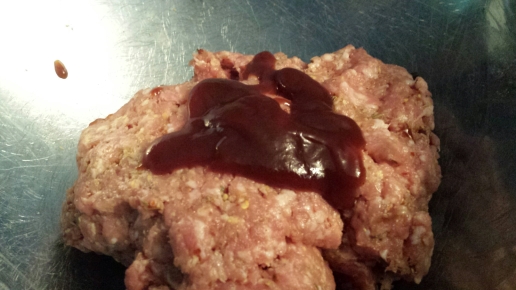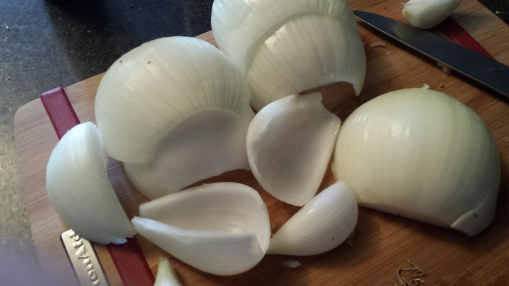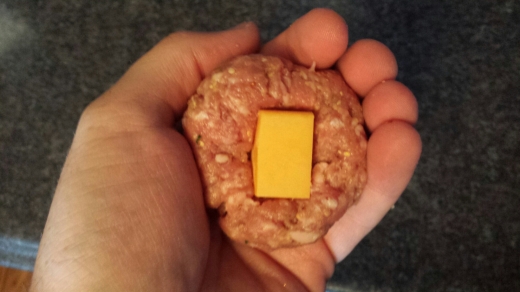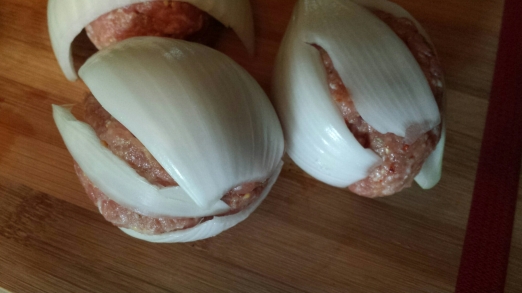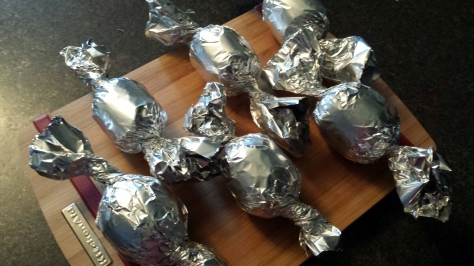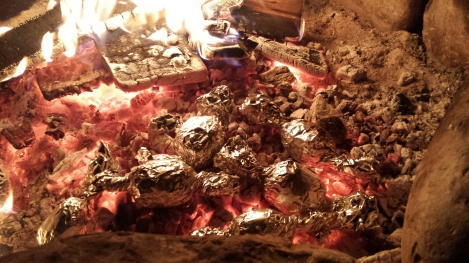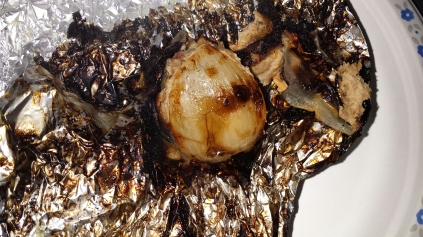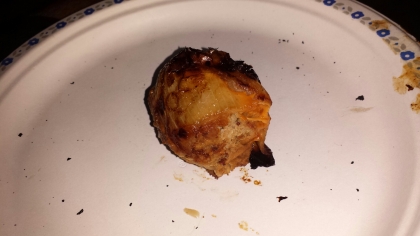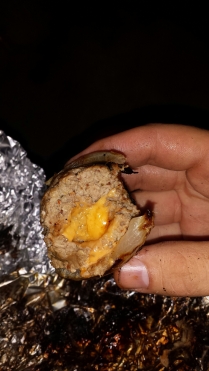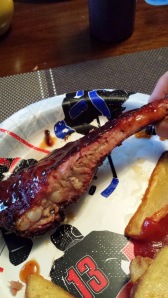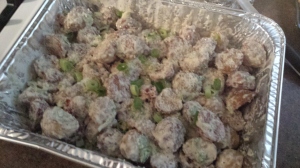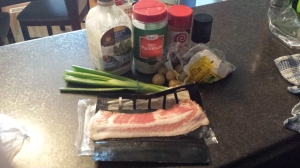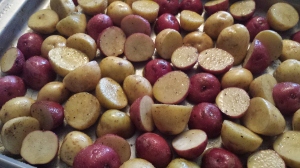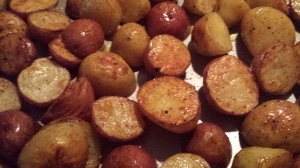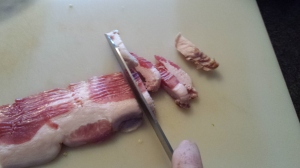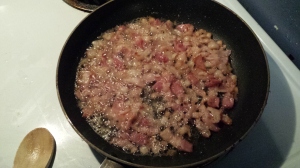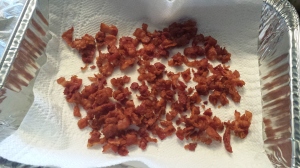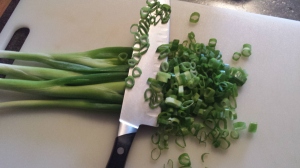BBQ SAUCE
A good BBQ Sauce can make good BBQ great and a great BBQ Sauce can make great BBQ amazing. The trick? Realizing that BBQ sauce is a personal taste thing and not everyone will like the same sauce. The solution? Experimentation. Try a sauce and see what everyone thinks. The best advise (in my opinion) I give anyone on topics like this is to ask people who you know won’t sugar coat their words or their opinions on your creations. Guess what, if I ask my Grandmother what she thinks of anything I make, she’s going to “love” it. Great for the ego, but not great for finding something that works. We should be working towards creating a sauce that will have enough layers of flavour that your whole family will find something they like in it.

For example…If I make a sauce that is nothing but all sweet flavours, someone like myself who prefers savory and spicy flavours probably wont enjoy it. If I make a sauce that is nothing but pure heat, then anyone with a sensitive tongue is going to be looking for the closest faucet to wash the sauce off. Now, if I make a sauce that is sweet, has a hint of savory elements and has a little kick of heat at the end, I’ve found a winner for my house. Your house, your flavours.
Here is the basics. You need to decide on the type of sauce you want to make. You can Google “BBQ Sauce” and you are going to see terms like Kansas City Style, Memphis Style, Carolina Style, Texas Style, etc. The differences in these sauces is mainly what they use as their base, or main ingredient.
There are 3 main bases that most BBQ sauces start from. Tomato or Ketchup, Vinegar and Mustard.
Choose the base you think will work for you.
THE BASE
Now take this nugget of information as a hint on where most people in Ontario (and Canada for that matter) find their tastes directing them. Go to the grocery store and hit the BBQ Sauce isle. Try to find ANY sauce that isn’t a tomato based sauce. See any? Probably not. The people in our neck of the woods traditionally are suckers for thick, mahogany red, sweet and sticky BBQ sauces. Sure, you can get garlic, spicy, honey, whiskey, etc. but guess what they all have in common? Red. Sweet. Thick. Tomato.
Here’s a rough guide to your choice… Tomato for almost all sauces including those you put on the meat as it cooks so it gets nice and caramelized and sticky. Vinegar if you don’t like sweet at all and want something “zippy” and more of a finishing sauce you mix into the meat at the end or dunk your meat in as you eat. Mustard if you are looking for a more savory sauce. Now this is REALLY rough. You can definitely make a sweet vinegar sauce or a savory tomato sauce.

Here’s another thing to consider. Pick up any tomato based sauce in the grocery store and look at the ingredients. Know what you are gonna see? Vinegar. I almost guarantee it. You don’t have to limit yourself to one and done. Mix and match! And don’t be afraid to go beyond straight Heinz ketchup, White Distilled Vinegar and French’s Yellow Mustard. There are plenty of varieties of each base out there. Open up your mind to Cider or Rice Wine Vinegar, Grainy or Dijon Mustard, etc. You will be happy you did.
Now that you have your base, decide what you want it to taste like.

Want it sweet? Here are a list of things you could add to the sauce to sweeten the works up:
Sugar (brown, white, raw, maple), Honey, Maple Syrup, Corn Syrup. Those are the usual culprits. But don’t be afraid to think outside of the box. Have a few peaches lying around that you haven’t eaten yet? Cook em up, blend them and throw them in! I’ve seen TONS of fruit based sauces. Blueberry, Pineapple, Peach, Mango, etc. Have something else in mind? Use it! In the words of the Urban Peasant, James Barber: “If you like it, put it in. If you don’t, leave it out!”.
AROMATICS
These are ingredients that are used to build a flavour base in sauces, stews, soups, whatever. In the BBQ sauce world onions and garlic reign supreme as well as some strong herbs like basil, oregano, rosemary, thyme. These are only a few of literally hundreds you can choose from. In most sauces you won’t be able to pin point the onion flavour, or the garlic, or the other vegetables and herbs used to build that base but trust me, you would notice something was missing if I lined two sauces up side by side and one didn’t have them in there. Choose the aromatics that you think will go well with the base you picked and the overall goal of the sauce. Want something sweet? Caramelize a sweet onion until they are nice and brown and full of sweet flavour as your base. Want something savory? Just sweat the onions until soft, toss in some power herbs like rosemary and thyme. Want some heat? Pull out the jalapenos or chipotle peppers. The choices and combinations here are limitless.
SPICES

This is where you take the sauce and truly customize it. Some spices will instantly transform your sauce from generic to truly unique. Because of this you need to be a bit careful in what you add but you also can’t be afraid of adding enough to make it stand out. For example, if I want to make a curry style BBQ sauce but only add a 1/2 teaspoon to 4 cups of sauce you might notice it but probably not as a main flavour. Now, in my opinion, if you are making a curry BBQ sauce it better taste like curry. Toss in a couple tablespoons. Want a sweet and savory sauce? Cinnamon, clove, mace, ginger, etc. Spicy? Cayenne Pepper, Black Pepper, Red Chili Flakes… Mix and match here. The place where you need to be careful however is in the quantity. Something like 2 tablespoons of cinnamon in a couple cups of sauce will make everyone think they are eating a Cinnabon. I think you get the picture.
Experimentation here is key.
OTHER FLAVOURINGS
The sky is the limit here. This is where you can add Whiskey, Tequila, Rum, Beer any type of booze. Apple, Pineapple, Peach or any fruit juice. Coca-cola, Dr. Pepper, Root Beer, any soda. Again. If you are trying to impart a flavour, go for it. Don’t be shy!

Hot and Cold. Meat or No Meat. The Meat Itself.
Here is something that blew me away when I realized it. It blew me away because I didn’t realize it sooner and made me feel stupid for not. Your sauce will taste different cold than hot. It will also taste different on meat than on your finger or a spoon. Simple right? Took me a long time to figure this one out. Try taking a big whiff of a sauce as you cook it with a good amount of vinegar in it. It will take your breath away. Let it cool and put it on some pork and it will be mellow and delicious. Take a small spoonful of a sauce you are trying to make spicy. Not that spicy yet? Let it cool and meld into the sauce for a couple hours and poof, it will blow your head off. Making a sauce for a beef roast you have on the rotisserie? Why test it on a piece of chicken? Making a nice mustard based dipping sauce for the ham you have in the oven? Have a couple slices of ham ready to go to drip some sauce onto to test it out and see what it needs. Morale of the story…If you are creating a sauce, make sure you test it out in the application you plan to use it.
Now, for the people who have eaten our BBQ Team’s food in the past and have literally begged us for the recipe. I’m sure some of you saw this post and were hoping against the odds that I was about to spill the beans on our BBQ Team’s sauce. The one we have won championships with. The one that got us our invitation to the Jack Daniels World Championship Invitational BBQ. The one that only 3 people on the planet knows how to make. I obviously won’t be sharing that, sorry!
But here is what I can tell you. It’s ketchup based. Sweet with a bit of heat. That’s all you’re getting.
Want a recipe that most people will like? Here is one that will hit a lot of taste buds out there and work as a very good all purpose sauce for all meats.
If you have a question about sauces in general or the sauce below, please do not hesitate to ask!
MD
Dr. Pepper Sweet and Spicy BBQ Sauce
INGREDIENTS
THE BASE
2 cups Ketchup
2/3 cup Brown Mustard
2 Tablespoon Apple Cider Vinegar
(look all 3 bases!)
2 cup Brown Sugar (the sweetener)
AROMATICS
6 cloves Garlic, Minced
1/2 a Sweet Onion, Caramelized
2 Chipotle Peppers Packed In Adobo (want it spicier? add 3 or 4 or 5…its up to you)
SPICES
1 teaspoon ginger
1 teaspoon cinnamon
salt and pepper to taste
OTHER FLAVOURINGS
1 Tablespoon Worcestershire Sauce
2 cans Dr. Pepper
INSTRUCTIONS
- Place all of the BASE ingredients in a big pot and bring to a gently boil over medium high heat. Make sure you stir this stuff constantly. It will burn if you don’t.
- In a frying pan, caramelize onions over medium heat until dark brown and sweet.
- Place the onions and the rest of the aromatics in a food processor or blender and puree. Add to the pot with the BASE ingredients.
- Add in your SPICES and OTHER FLAVOURINGS
- Continue to gently boil until the sauce reduces and thickens up. About 30 minutes.
- Because of the ketchup there is probably a gross looking red film on the top of the sauce. Spoon this off and throw out.
- Let cool completely and bottle.
- Put on your favourite meats and enjoy!

